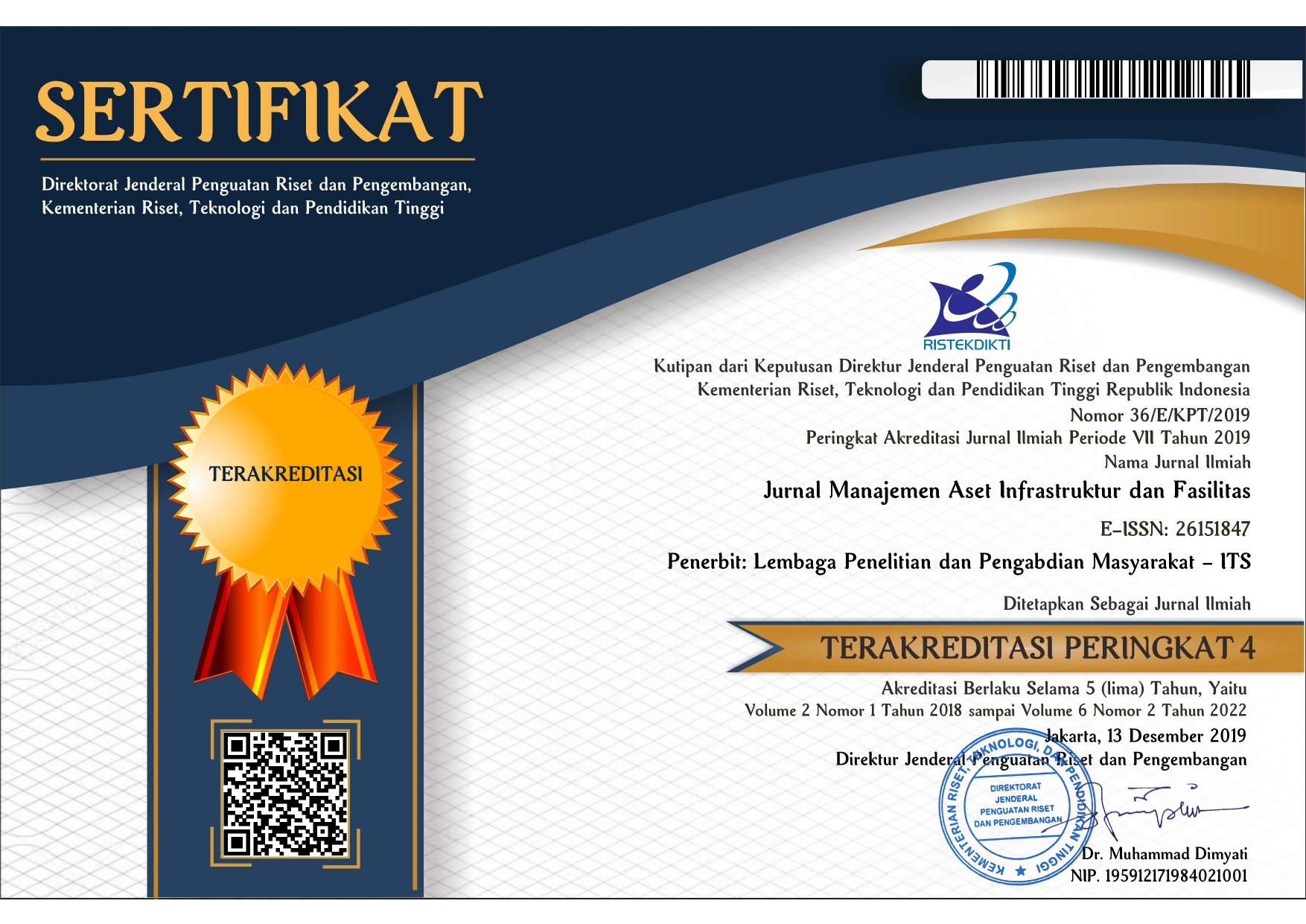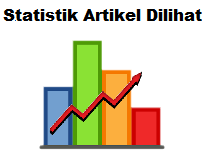Kewirausahaan berbasis Komunitas : Model Bisnis untuk Pengelolaan Aset dan Infrastruktur
Abstract
Artikel ini bertujuan untuk mengidentifikasi bisnis model dalam pengelolaan wilayah berupa ruang terbuka hijau yang merupakan fasilitas umum yang dimiliki sebuah desa. Analisis ini menggunakan pendekatan phenomenology, di mana peneliti terlibat langsung sebagai volunteer sehingga memungkinkan untuk memahami bagaimana masyarakat mengelola ruang terbuka hijau di Kecamatan Trawas Mojokerto Jawa Timur. Hasil temuan kami menunjukkan bahwa model bisnis kewirausahaan sosial yang berbasis komunitas mengelola ruang terbuka hijau dengan beberapa prinsip, antara lain (1) mengembangkan inovasi sosial untuk memecahkan masalah lingkungan, (2) memanfaatkan karakter lokasi yang untuk menghasilkan produk dan layanan baru, (3) memanfaatkan jaringan untuk mendapatkan ide pengembangan produk dan jasalayanan, serta (4) mendorong keterlibatan untuk mendapatkan dukungan dari masyarakat yang lebih luas. Penelitian ini berkontribusi pada teori layanan publik dengan menggabungkan konsep kewirausahaan sosial dan teori pengelolaan lokasi.
Full Text:
PDFReferences
Beck, D. & Brooks, S. (2019). “Social enterprise and the development of cultural heritage assets as catalysts for urban place-making”, In: Calabrò, F; Della Spina, L; Bevilacqua, C (Ed.), New Metropolitan Perspectives. ISHT 2018. Smart Innovation, Systems and Technologies, Berlin: Springer, pp. 308-315.
Cilliers, E. J., Timmermans, W., van den Goorbergh, F. & Slijkhus, J. S. (2015). “Designing public spaces through the lively planning integrative perspective”. Environment, Development, and Sustainability, Vol. 17 No.6, pp. 1367-1380.
Defourny, J. & Nyssens, M. (2017). “Mapping social enterprise models: some evidence from the “ICSEM” project”. Social Enterprise Journal, Vol. 13 No.4, pp. 318-328.
Dentoni, D., Pascucci, S., Polner, K. & Gartner, W. B. (2018). “Learning “who we are” by doing: Processes of co-constructing prosocial identities in community-based enterprises”. Journal of Business Venturing, Vol. 33 No.5, pp. 603-622.
Gregory, D. et al. (2009). The Dictionary of Human Geography. Wiley-Blackwell Publishing. London.
Institute of Place Management (2018). What is Place Management?. Available at: http://www.placemanagement.org/ [Accessed 2 10 2018].
Jeong, Y-Y., Moon, T-H. & Han, J. H. (2016). “A typology of network city in a socio-economically disadvantaged region”. City, Culture and Society, Vol. 7 No.3, pp. 161-168.
Kahler, M. (2009). Networked Politics: Agency, Power, and Governance. Cornell University Press.Ithaca.
Kay, A., Roy, M.J. & Donaldson, C. (2016). “Re-imagining social enterprise”. Social Enterprise Journal, Vol. 12 No. 2, pp. 217-234.
Lombard, M. (2014). “Constructing ordinary places: Place-making in urban informal settlements in Mexico”. Progress in Planning, Vol. 94, pp. 1-53.
Manning, C. & Sumarto, S. (2011). “Employment, living standards and poverty: Trends, policies and interactions”, In Manning, C.; Sumarto, S. (Eds.): Employment, Living Standards and Poverty in Contemporary Indonesia. Institute of Southeast Asian Studies, pp. 1-22. Singapore.
Medway, D., Parker, C., Quinn, S. & Robert, G. (2016). “Changing place; placing change”. Journal of Place Management and Development, Vol. 9 No. 1. https://doi.org/10.1108/JPMD-02-2016-0007.
Medway, D., Roberts, G. & Parker, C. (2017). “Editorial”. Journal of Place Management and Development, Vol. 10 No.1, pp. 2-6.
Miles, J. & Gilbert, P. (2005). A Handbook of Research Method for Clinical and Health Psychology. Oxford University Press. Oxford.
Musterd, S. & Kovács, Z. (2013). Place-making and policies for competitive cities. Wiley-Blackwell. Sussex.
Pato, L. & Teixeira, A.A.C. (2018). “Rural entrepreneurship: The tale of a rare event”. Journal of Place Management and Development, Vol. 11 No.1, pp. 46-59.
Peredo, A.M. & Chrisman, J.J. (2006). “Toward a theory of community-based enterprise”. Academy of Management, Vol. 31 No. 2, pp. 309-328.
Pierce, J., Martin, D. G. & Murphy, J. T. (2011). “Relational place-making: the networked politics of place”. Transactions, Vol. 36 No. 1, pp. 54-70.
Porter, I. D. et al. (2017). “The world towns framework: A call to action”. Journal of Place and Development, Vol. 10 No.5, pp. 504-520.
Pratono, A.H., Pramudija, P. & Sutanti, A. (2016). “Social enterprise in Indonesia: Emerging models under transition government”. ICSEM Working Paper No.36. Liege, Belgia: The International Comparative Social Enterprise Model (ICSEM) Project.
Pratono, A.H. & Tjahjono, G. (2017). “How does materialistic attitude influence the impact of corporate brand on the customers’ intention to donate to corporates’ charity?”. Humanomics, Vol. 33, No. 4, pp 484-498.
Pratono, A. H., Suyanto, Marciano, D. & Zurbrügg, C. (2017). “Social return on investment for community-based enterprise in Surabaya City”. The Hong Kong Journal of Social Work, Vol. 51 No. 1/2, pp. 93-114.
Pratono, A.H. & Maharani, A. (2018). “Long-term care in Indonesia: The role of integrated social post for elderly”. Journal of Aging and Health, Vol. 30 No. 10, pp. 1556-1573.
Quin, S. (2018). Managing Places Special Interest Group, Available at: www.placemanagement.org/special-interest-groups/managing-places/ [Accessed 1 October 2018].
Randall, W. S. & Mello, J. E. (2012). “Grounded theory: An inductive method for supply chain research”. International Journal of Physical Distribution & Logistic Management, Vol. 42 No. 8/9, pp. 863-880.
Ratten, V. & Welpe, I. M. (2011). “Guest editorial: Special issue: Community-based, social and societal entrepreneurship”. Entrepreneurship & Regional Development, Vol. 23 No. 5/6, pp. 283-286.
Sankaran, K. & Demangeot, C. (2017). “Conceptualizing virtual communities as enablers of community-based entrepreneurship and resilience”. Journal of Enterprising Communities: People and Places in the Global Economy, Vol. 11 No. 1, pp. 78-94.
Seamon, D. & Lundberg, A. (2017). “Humanistic Geography”. International Encyclopedia of Geography: People, the Earth, Environment and Technology, Vol. 6, pp. 1-11.
Smith, J. A., Flowers, P. & Larkin, M. (2009). Interpretative Phenomenological Analysis: Theory, Method, and Research. Sage. London.
Soemitro, R.A.A. & Suprayitno, H. (2018). “Pemikiran Awal tentang Konsep Dasar Manajemen Aset Fasilitas”. Jurnal Manajemen Aset Infrastruktur & Fasilitas, Vol. 2, Suplemen 1, Juni 2018, Hal : 1-13.
Sommerville, P. & McElwee, G. (2011). “Situating community enterprise: A theoretical exploration”. Entrepreneurship & Regional Development, Vol. 23 No. 5-6, pp. 317-330.
Suprayitno, H. &Soemitro, R.A.A. (2018). “PreliminaryReflexionon Basic Principleof Infrastructure AssetManagement”. Jurnal Manajemen Aset Infrastruktur & Fasilitas, Vol. 1, No. 1, Maret 2018, Hal. : 1-9.
Vestrum, I. (2014). “The embedding process of community ventures: creating a music festival in a rural community”. Entrepreneurship & Regional Development, Vol. 26 No. 7-8, pp. 619-644.
Warnaby, G. & Medway, D. (2013). “What about the 'place' in place marketing”. Marketing Theory, Vol. 13 No. 3, pp. 345-362.
Zhang, L. E. & Guttormsen, D. S. (2016). “’Multiculturality’ as a key methodological challenge during in-depth interviewing in international business research”. Cross Cultural & Strategic Management, Vol. 23 No. 2, pp. 232-256.
DOI: http://dx.doi.org/10.12962/j26151847.v3i2.5885
Refbacks
- There are currently no refbacks.
Jumlah Pengunjung :
Flag Counter

Jurnal Manajemen Aset Infrastruktur & Fasilitas by Departemen Teknik Sipil ITS is licensed under a Creative Commons Attribution-ShareAlike 4.0 International License.





